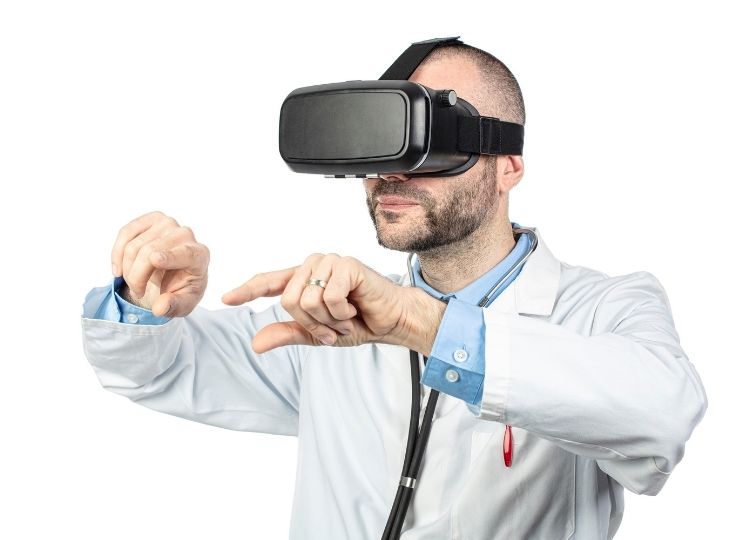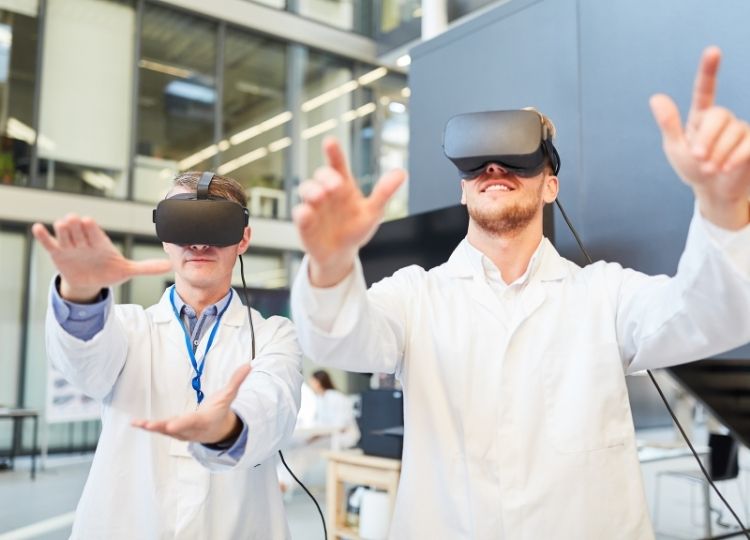
With the advancement in Information and Technology, every industry is revolutionizing. Like other industries, the healthcare industry is also benefiting from recent inventions. VR simulators are one such invention that is helping the healthcare industry in several ways.
Virtual reality (VR) simulators have become an increasingly popular investment in the healthcare industry as a tool for training and education.
VR simulators provide a realistic and immersive experience to help healthcare professionals learn new skills or keep up with current best practices. They are also being used to help patients undergoing treatment visualize their progress and see the results of their rehabilitation.
Building a VR simulator in the healthcare business is a complicated pursuit, but it can be worth the investment for companies willing to prepare for the future. This blog post will provide tips on how to build a VR simulator for healthcare. So, let’s begin the article.
Determine The Scope of The Project
The first step in building a VR simulator is determining the project’s scope. What are the goals of the simulator? What kind of training or education will it be used for? What are the specific requirements of the healthcare professionals who will be using it? Answering these questions will help you narrow down the options and choose the right approach for your project.
You can use pre-existing environments and those that are custom-built. Pre-existing VR environments can be adapted for healthcare training, but they may not be specifically designed. Custom-built VR simulators offer more flexibility and can be tailored to the specific needs of the healthcare industry.
Choose The Platform for VR Simulators
The next step is to choose the platform for your VR simulator. There are a variety of VR platforms available, each with its strengths and weaknesses. Some platforms are better suited for certain types of training than others. You will need to decide which platform is best for your needs before you can begin building your simulator.
Some of the most popular VR platforms for healthcare training include Oculus Rift, HTC Vive, and Samsung Gear VR. These platforms offer a variety of features and options that can be customized to meet the needs of the healthcare industry.
Oculus Rift is a good choice for training that requires a high degree of immersion. The platform offers a wide field of view and high accuracy, making it ideal for procedures requiring precise movements. HTC Vive is another good choice for training that requires a large amount of space. The platform offers a room-scale VR experience that can be used to simulate a variety of environments.

Develop a Project Team
After you have determined the project’s scope and chosen a platform, you need to develop a project team. The team should include individuals with expertise in VR development, healthcare, and instructional design. You also need project managers, business analysts, and UI designers.
The VR development team will be responsible for creating the simulator. They will need to have a good understanding of the chosen platform and the ability to create custom content. The healthcare team will provide expertise on the procedures and processes that will be simulated. The instructional design team will determine how the simulator will be used for training and education.
The project manager will be responsible for coordinating the team’s efforts and ensuring that the project is completed on time and within budget. The business analyst will work with the team to identify the needs of the healthcare industry and determine how the simulator can meet those needs. The UI designer will create an interface that is easy to use and provides a realistic experience for the users.
Estimate The Project Budget
Estimating your budget is a crucial step in building a VR simulator. You need to consider the costs of the hardware, software, development, and testing. You also need to factor in the cost of ongoing maintenance and support.
The cost of building a VR simulator can vary depending on the project’s scope and the chosen platform. However, if you are working with a limited budget, you may want to consider using pre-existing VR environments or platforms that offer free or low-cost options. You can also use open-source software to create your simulator. Blockchain uses in finance can also help you save money.
Create a prototype of the VR Simulator
The development of a prototype is a crucial step in the process of building a VR simulator. The prototype will help you test the project’s feasibility and determine the necessary changes. It will also allow you to identify any potential problems during development.
The prototype should be created using the chosen platform and include all of the features you plan to have in the final version. Healthcare experts should test the prototype to ensure that it meets all requirements.
Identify and Eliminate Bugs and Errors
Identification of errors and bugs is a crucial step in the process of building a VR simulator. You need to ensure that the simulator is free of any errors or bugs before being used for training. Bugs in a simulator can cause problems for users and may even lead to injury.
Errors and bugs can be identified through testing. You should test the simulator on various hardware and software platforms. You should also try the simulator with a variety of different users. Once you have identified any errors or bugs, you need to fix them before the simulator can be used for training.